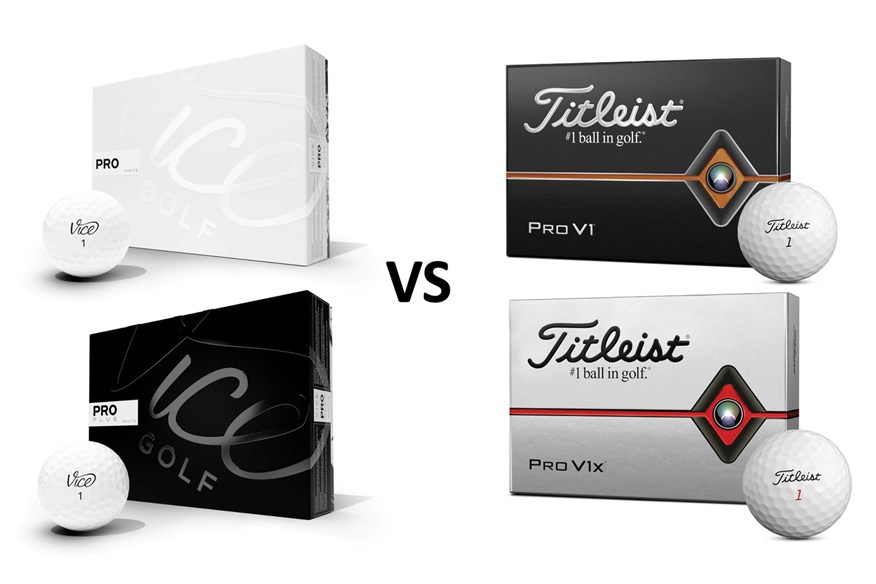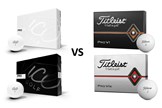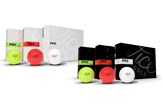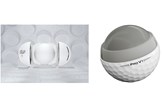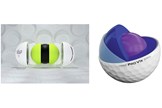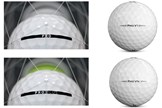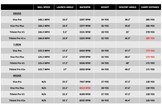Vice Golf vs Titleist Pro V1 golf balls
Last updated:
Vice Golf claim their balls offer performance to match any premium golf ball, but at a fraction of the price. We put them to the test against the market-leading Titleist Pro V1.
The rise of direct-to-consumer golf balls
There’s a fair chance you may not have heard of Vice Golf. Compared to established brands like Titleist, Callaway and TaylorMade, all of whom have been making golf balls for decades, Vice Golf are a relative newcomer to the market.
Infact not too long ago, the only golf balls you could buy were big-name brands from big-name retailers. But times have changed.
Related: Cut Golf vs Titleist Pro V1 golf balls-
Direct to consumer (DTC) golf balls – from brands you won’t find in any retailer – are growing in popularity because they offer premium performance at budget prices.
Over the last few years we’ve done quite a bit of testing with Snell and Vice balls, both available online only. Last year we tested them on a robot alongside the most popular balls in the business, and both were more than a match for some market-leading models.
Brands like Vice and Snell, as well as Seed and Cut Golf, have adopted a business model that enables them to manufacture golf balls in far flung factories, using very similar materials and technology to tour-backed alternatives, while minimising costs to produce savings that can be passed to the consumer.
Related: Seed Golf vs Titleist Pro V1 golf balls
These DTC golf ball companies have no retailer margins, no tour endorsements and no enormous R&D budgets, which means pricing can be more competitive.
Thanks to Vice updating their entire range for 2020, we felt the time was right to put all the new models to the test, and compare them against the benchmark Titleist Pro V1 franchise.
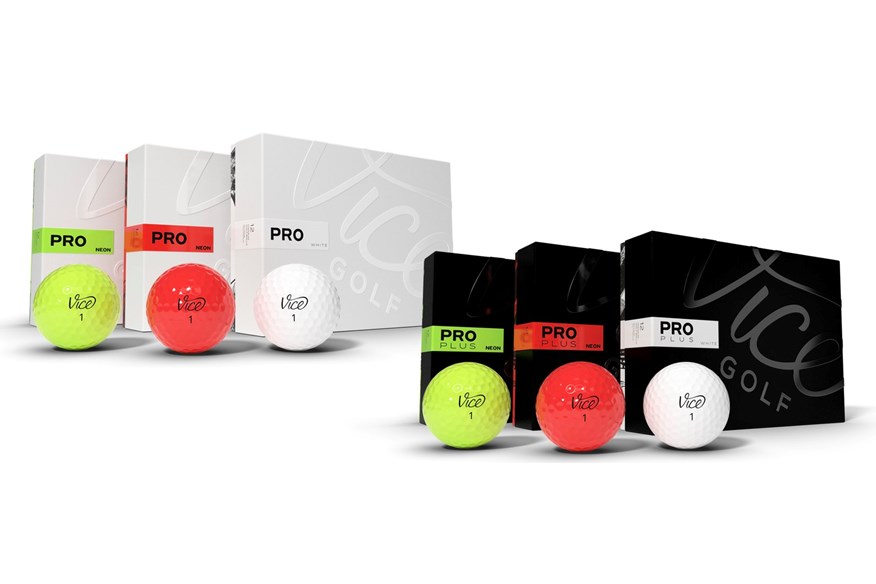
We’ve chosen the balls in this test because they’re the direct tour-level competitors to the two Titleist balls. Vice also make softer, lower compression balls (the Pro Soft) which boast the same technology, but are specifically designed to perform at more average club golfer swing speeds – we’ll test those with a club golfer at another time.
How we did it
We asked each brand to send us two dozen of their best tour-level urethane covered golf balls, like the Titleist’s. TG test pro Neil Wain hit shots with his own Ping i210 wedge, 7-iron and G410 Plus driver indoors to ensure a controlled environment as a Foresight Sports GC Quad launch monitor recorded data.
Enter Vice Golf
Vice was founded by two Germans in 2010 (Ingo Duellmann and Rainer Stoeck), and they were very much pioneers in spotting the opportunity for premium tour-level golf balls to be sold direct to consumer on the internet.
RELATED: Revealed – The right golf ball for your game
Vice Pro and Vice Pro Plus golf balls
Vice Pro
Price: £29.88 per dozen
Construction: Three-piece
Cover material: Urethane
Compression: 90
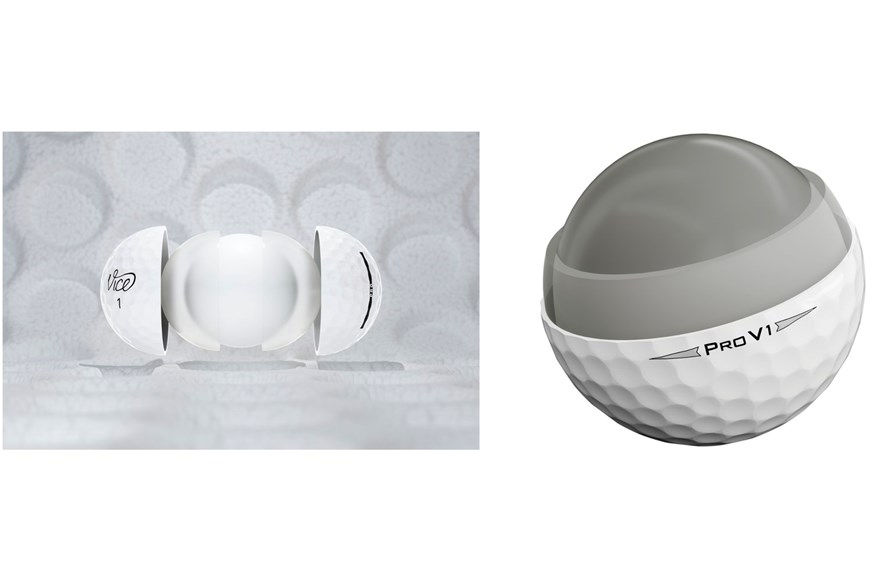
Key numbers: Vice Pro golf ball
43% cheaper than a Pro V1
2.5% more driver distance than the comparable Pro V1 (1.4% less than the Pro V1x)
0.6% more iron distance than the comparable Pro V1 (1.2% than the Pro V1x)
3.2% less wedge spin than the comparable Pro V1 (4.9% less than the Pro V1x)
RELATED: Best Ladies’ Golf Balls
Explained: Vice Pro and Pro Plus golf balls
The Vice Pro has a slightly softer compression which boosts feel, and is optimised for players with medium to high swing speeds (95-110mph with a driver). The Pro Plus launches lower with less spin; Vice say it’s suited to golfers with high swing speeds (110+mph). Vice also make a Pro Soft, which is optimised to perform at club golfer swing speeds (less than 95mph).
RELATED: Srixon Q-Star Tour vs Titleist Pro V1 golf balls
Vice Pro Plus £29.88 per dozen
Price: £29.88 per dozen
Construction: Four-piece
Cover material: Urethane
Compression: 95
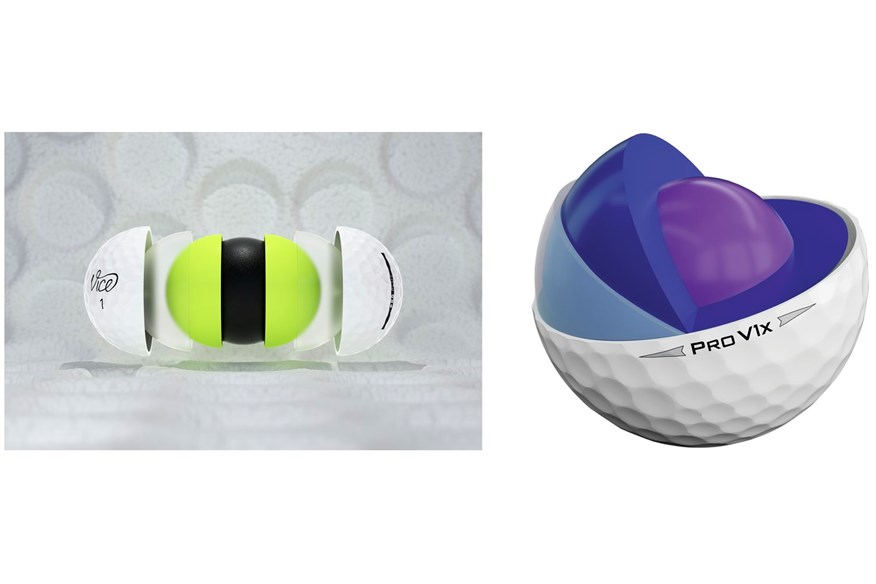
Key numbers: Vice Pro Plus golf ball
43% cheaper than a Pro V1x
1% less driver distance than the comparable Pro V1x (2.9% more than the Pro V1)
1.2% more iron distance than the comparable Pro V1x (0.6% more than the Pro V1)
0.7% more wedge spin than the comparable Pro V1x (2.7% more than the Pro V1)
Verdict: Vice Pro golf balls
We’ve tested Vice golf balls several times now and they’ve always performed well, bearing in mind the price difference, next to the market leader. Without excelling in one particular area we’ve always wondered whether a lower price is enough to convince golfers to switch, but in 2020 both new Vice balls excel across the board.
If your game puts a premium on a softer feel over an x-type ball, the Pro (for driver swing speeds at 95mph and above) is more than a match for a Pro V1. Our data has it 1.7mph faster with the driver, which meant our pro picked up seven yards of carry, plus an extra yard with a 7-iron. Some will argue giving up 262rpm of wedge backspin (which could be attributed to strike) to get that extra speed is the compromise, but nobody bar the very best would notice such tiny levels of spin difference.
Related: Callaway Chrome Soft vs Titleist Pro V1 golf balls
If there’s been a criticism of Vice before it’s how the covers were prone to scuffs, but we saw zero damage from the newly formulated cover during our test.
As for the Pro Plus (for above 110mph swing speeds; our pro swings at between 113-117mph) it’s the first time we’ve seen the Pro V1x out-done for wedge spin (which some will find odd as the softer Pro V1 is often considered to spin more), which can’t be overstated as a huge achievement for Vice.
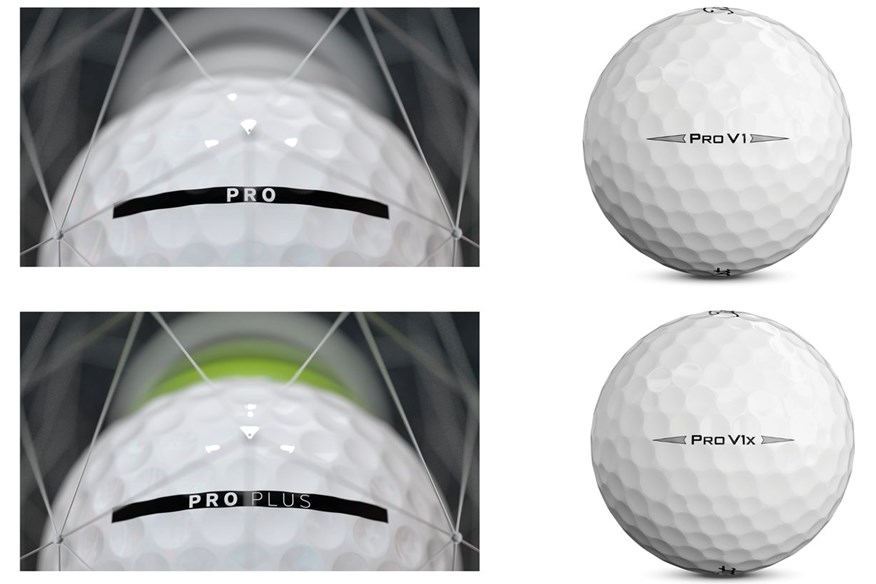
Pricing: Vice Pro and Pro Plus golf ball
1 dozen – £29.88
2 dozen – £29.88 per doz
3 dozen – £29.88 per doz
4 dozen – £29.88 per doz
5 dozen – £25.08 per doz
Shipping: Flat rate of £4.99 whether you order one dozen or five
Data comparison: Vice Pro and Pro Plus vs Titleist Pro V1 and Pro V1x golf balls
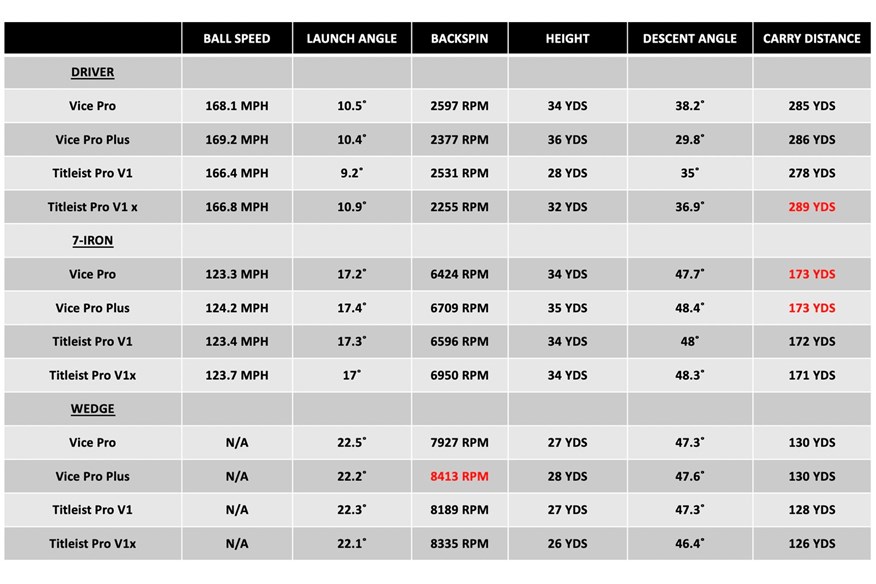
What did we learn from our DTC golf ball test?
Don’t sacrifice wedge spin
If you play the Pro V1 because you believe it gives the most spin with a wedge, think again. Just as our robot ball test revealed last year, you get more backspin/control from the firmer Pro V1x. We’re only talking between 2-4% more, but it’s the 11 yards you give up with a driver compared to the Pro V1x that really hurts with a Pro V1.
The Taiwan connection
A glance at the boxes our golf balls arrived in shows several are made in Taiwan. Investment levels required to construct a golf ball plant are significant, so while Titleist, Callaway and Srixon all own theirs, plenty of others share a factory. What’s our point? Well, as long as there’s a major brand using the same factory, significant quality control procedures will be in place. So small brands can piggyback on the consistency and quality of a major player.
Commit to one ball
We’ve said it a million times, but right now there couldn’t be a better time to commit to using the same ball every time you play. It gives consistency and similar results, which for most club golfers would be a decent step forward from using the different balls they find. DTC brands often offer discounts when you buy more, so if you can invest in five dozen for the year, it means you’ll get the best possible price, too.
Can you tell the difference?
It’s difficult conducting a “Pepsi challenge” blind test on golf balls as dimple patterns and logos can’t easily be neutralised, but our test pro said he’d be amazed if a club golfer could spot the difference between any of our tour-level test balls and a Pro V1 based on feel alone; he couldn’t. There can’t be a better endorsement of how far DTC golf balls have come than that.
They’re all conforming
Over the years we’ve seen plenty of balls go up against the Pro V1, but they’ve always come with a “they’re just as good as a Titleist” sub-story. This is the first time we’ve seen Titleist’s market leading designs out-performed in areas they’re supposed to dominate, which is a milestone. And all of the Vice balls conform to USGA and R&A rules too.
Read next: Robot tested – Which golf ball suits your game?

Review written by: Simon Daddow
Job title: Today’s Golfer – Equipment Editor
